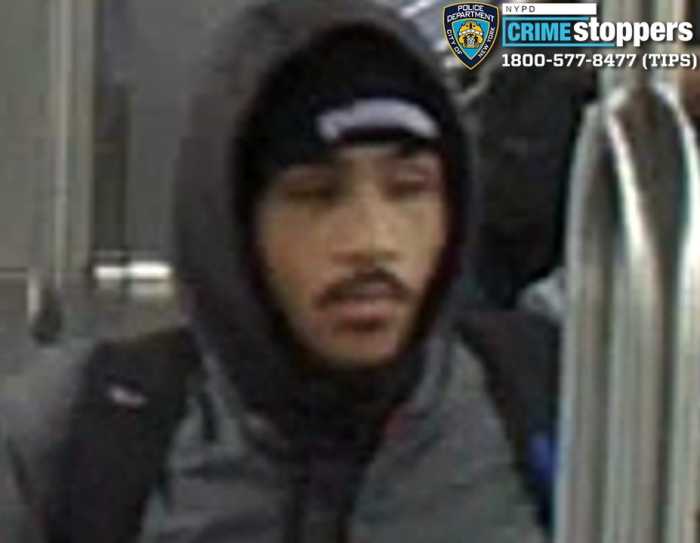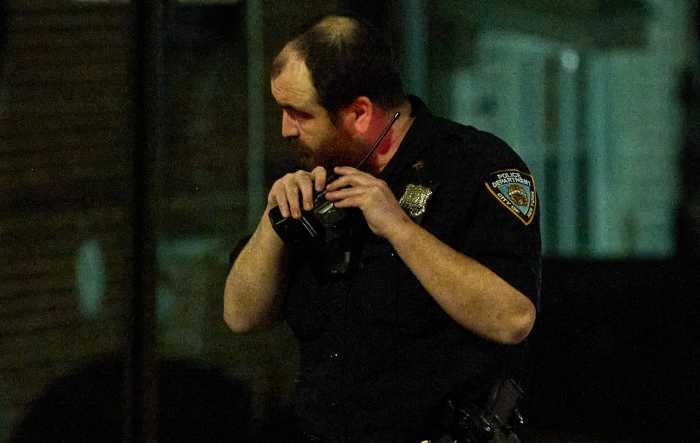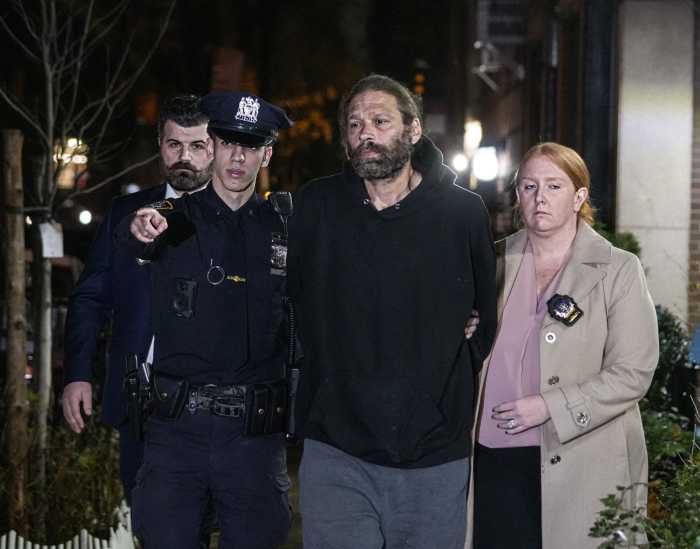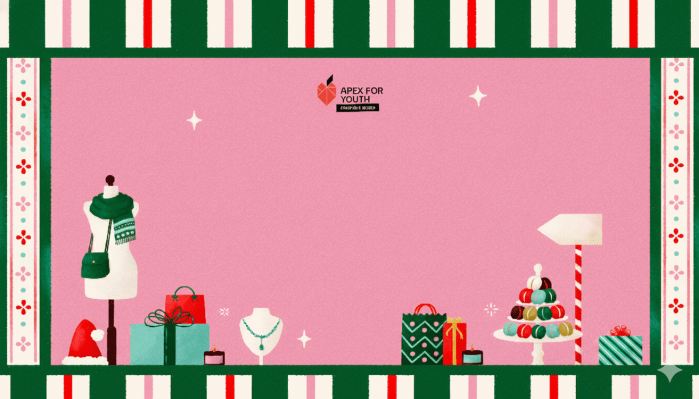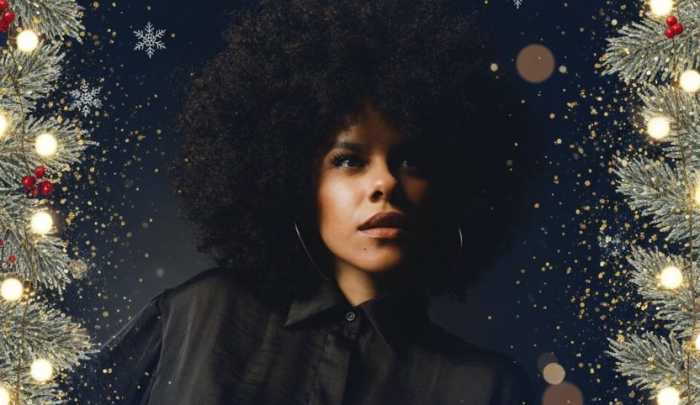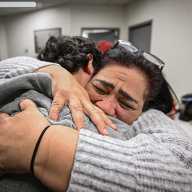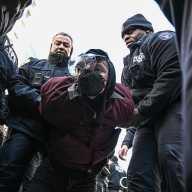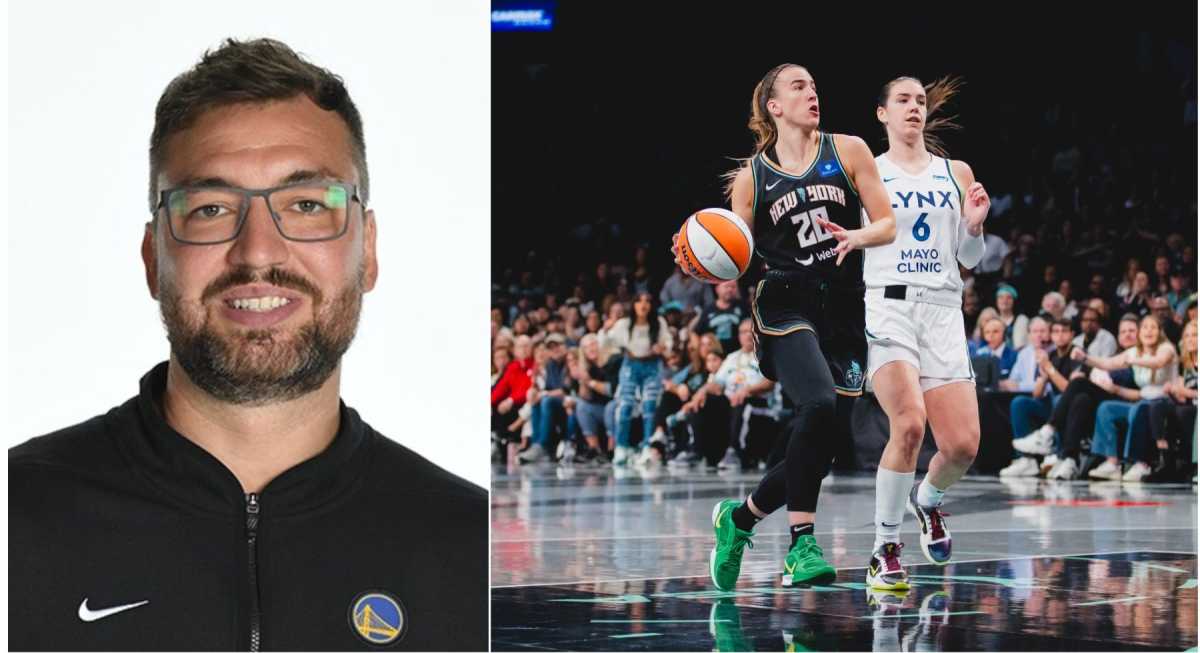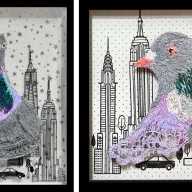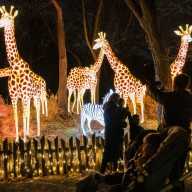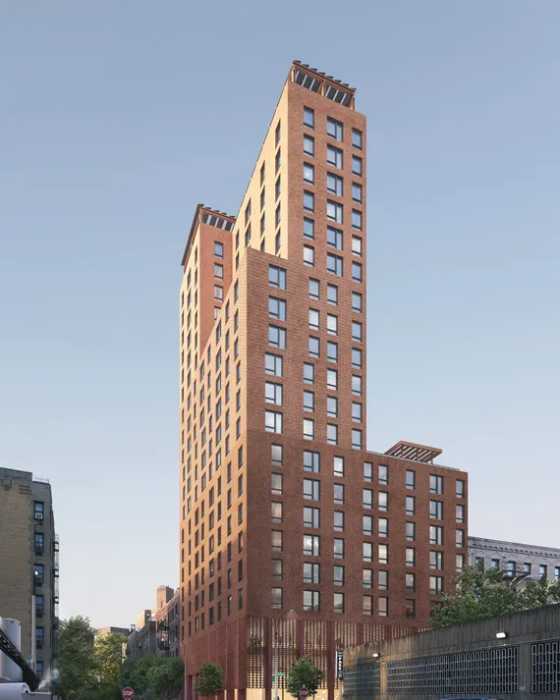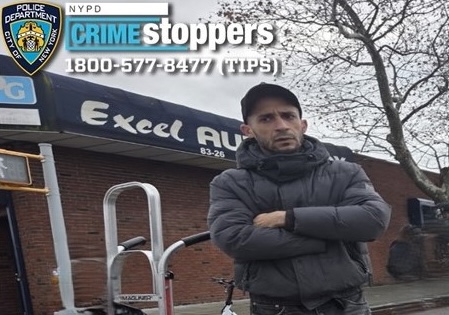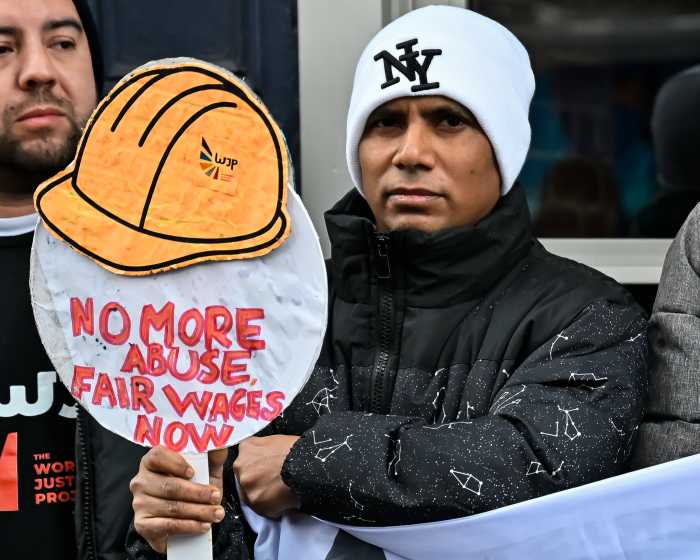By Heather Fenby
“Die yuppie scum” graffiti covered this neighborhood back in 1988, when the Tompkins Square riot pitted squatters and homeless-rights activists against cops on a hot August night. “My horse is my penis! My stick is my dick!” taunted the crowd as mounted riot police charged protesters and bystanders alike, bottles rained down from rooftops, and helicopters beamed searchlights from above. In 2001, this same corner held our neighborhood’s shrine for the missing, poems and flowers and candles for those we thought we reviled. One of our block’s French bistros, long bemoaned as an example of the gentrification that supplanted any remaining real bohemia with destination fun, replaced its prix fixe chalkboard with an open invitation for free dinner for blood donors and volunteers. And the cops at the Ninth Precinct’s stationhouse invited local street artist Chico (Antonio Garcia) to paint a new mural on their garage bay door: “To the Community: Thank You.”
This is the East Village, iconoclast central. And in our grieving, we are redefining our stance against authority, shaping a leftist patriotism, and reclaiming our community. The 13 years since the Tompkins Square riot have seen the very gentrification the demonstrators feared. Overpriced Thai food trumps funky performance gallery. Community gardens bulldozed and developed. Although the raw anger and rebellion, and the most vocal squatters and punks, the most fabulous Mudd Club faces, the edge and the squalor, have been gone for some years now, the East Village remains invested in its outsider image.
Long-term residents often share the views expressed by performance artist and activist Penny Arcade, that the police are protecting real estate interests and “your right to walk down Avenue B in a slip.” Since when, she asks, “does the Housing Authority own a tank?” Gentrification, to Penny, is police enforcement of middle-class values. Cabaret artist Helen Stratford concurs, “The police were seen as a threat to creativity, intelligence, originality and all of the magical things that happen in chaos. They enforced order, conformity, the law.”
But after Sept. 11’s pyrotechnic horror show, viewed on TV or from our very own rooftops, our New York was literally invaded by the other New York, and then, virtually, by the world’s images and ideas of New York. Our neighborhood was cordoned off. Here, in the zone between 14th and Canal, with only official traffic and bona fide residents allowed, an authentic grief and solidarity took shape. We were incredibly respectful to one another; the homeless, briefly, became real people rather than a cause, just as the faceless sell-out yuppies moved from symbol to individuals in the heartbreaking Times tributes. The cordons let us fell the real soul of our neighborhood, without the clutter and chatter of the party crowd. They allowed us, too, to feel how close we were to what had happened; we were insiders. The constant sirens, the police policy of “omnipresence,” the discarded yellow tape and blue wooden barricades, the detritus of emergency, all felt more real than repetitive broadcast images, heroic/patriotic montages, rhetoric and analysis.
A memorial far less dense and organized than that at Union Square formed in Tompkins Square Park, the shape of a huge heart outlined with candles and full of flowers. A more profuse floral display blossomed on Avenue A just south of 14th St. under a breathtaking new mural of the city’s skyline painted by Chico on Sept. 11. The Hell’s Angels New York Chapter spanned the largest American flag I’ve ever seen across Third St. And the Ninth Precinct was reclaimed from TV land’s “NYPD Blue” iconography for the community, decorated with hundreds of thank-you cards from as far away as Oregon, and with the ever-fresh flowers at the sidewalk shrine.
Detective Jaime Hernandez, community affairs officer for the precinct, tells me that community response was instantaneous and overwhelming. People called and stopped in, asking what they could do, what the cops needed. Local hospitals and clinics and a Y.M.H.A. offered beds for those crashing after long shifts, and free care to the five precinct cops injured on the first day. People brought food. “This one woman, she’s a character, she likes to stop by, she likes to dance,” Hernandez says. “Always asking us for money. She brought us two packages of cookies and some juice. And she was crying because she said, ‘This is all I can afford.’ What are we gonna do, tell her we don’t need it? It was the type of thing you just wanted to grab her and scoop her up in a big hug.”
Irene Nolan owns Ponica, where she sells her own clothing designs, two doors down from the precinct house. For the first week after the attack, she stayed at home, watched TV, and felt isolated and afraid. One day she went down to the West Side Highway, and there was Helen Stratford, with a bunch of American flags, cheering like mad. Helen tells me that Irene grabbed a flag and held it close, and that marked the change. “Me? With an American flag? Embracing American values?” She opened up her shop because people need a place to gather, and she began to organize and coordinate donations to the precinct. Her schedule shows that for almost two months, every day, local restaurants delivered dinner for 75 cops. Once Irene began to call, people began calling her, asking, “How can I help?”
Irene tells me that participation saved her life. “It was scary to be alone during this time.” And Helen tells me that everything has changed, that the cops and the community have humanized one another. Before, she says, we could romanticize anarchy and revolution. But now, she says, “I see they are protecting our ability to create, to rebel. The taste of true chaos made us value that order and stability within which we experiment.”
One night a cop decided to paint a huge flag for the stationhouse, and it kind of didn’t look that good. So Lieutenant Sam ran up to Chico’s house at 11 p.m. The cops know Chico because, before he got commissions, he got busted for graffiti regularly. Lieutenant Sam told him, “We need a mural, something with a flag, a thank you.” And Chico grabbed his stuff and painted it in about half an hour. Irene shows me a photo of a broadly smiling group, some in uniform, “Cops and hippies, hanging out,” she says.
I go to a breakfast that the police are giving for the community. There is laughter and genuine warmth, lots of cops, business owners and artsy people. Detective Hernandez has made gorgeous, framed plaques for the people who’d dropped off business cards with their donations, featuring a stunning, detailed, pen-and-ink drawing of the precinct house. The precinct has also taken out a full-page ad in The Villager, which states: “Being a Police Officer is a very difficult job, but in these past days, you, the community, have helped to keep us strong, to reinforce the oath we have sworn to uphold the law, and made it easier to cope with this tragedy. They say that New York City is the greatest city in the world, but this saying cannot be complete without the greatest citizens of this city — like the residents of the Lower East Side.”
One cop says, “I’ll never forget that first night at Ground Zero. A citizen showed up with a shovel, wanting to help. That’s what this community has been like.” Irene, who’s from England, gives a beautiful speech about having lived here for 30 years but never having felt American until now. Someone talks about a new era, a transformation in how we all deal with one another. “These are our heroes and I’m glad that our society’s changed so it values that.” Everyone cheers.
Lieutenant Sam (Airam Ortiz) notes that she asked to be transferred to this precinct, and jokes about the renown of the “world-famous graffiti artist” Chico. The photographer who came by snaps picture after picture; everyone wants one of them with the cops, holding their plaque. Helen, resplendent in a swirling Victoriana gown, plays cabaret accordion, and then, as the gathering winds down, a gentle “America the Beautiful.”
Coming home I pass a building on Seventh St. with an actively tended shrine. Candles burn, flowers are fresh, and on the door is posted a Times obituary I had just read last night. Joyce, I remembered reading, “was the epitome of cool.” Of course this is where she lived. There is a pumpkin and wonderful cards: “I love you Joyce,” reads one card.
The nation moved on to abstraction and analysis, before New York was ready. And the smell and the rubble and the dust and the sirens and the tape and the posters — I want them to stay. Too quickly, the material races ahead of the emotional. We New Yorkers are still stuck on minutiae when the media has moved on to meaning. For the first time I understand that meaning can be the enemy. It’s always imposed, and always, particularity is plowed under, tamed. It makes sense to me that things should be disrupted, that we should be forced to confront what happened. And I can’t be the only New Yorker who feels a tad proprietary, as if the world has wrested our tragedy away from us for its war and its lessons and its justifications and its catharsis. Ours.
Someone has graffitied the sidewalks again. But with fat outlines of flowers, simple and schematic. The image is almost banal, yet oddly resonant and persistent; it surfaces intermittently from the fringes of my subconscious, the blossoming of new hope.
This article is reprinted from the Jan. 23, 2002, issue of The Villager.



